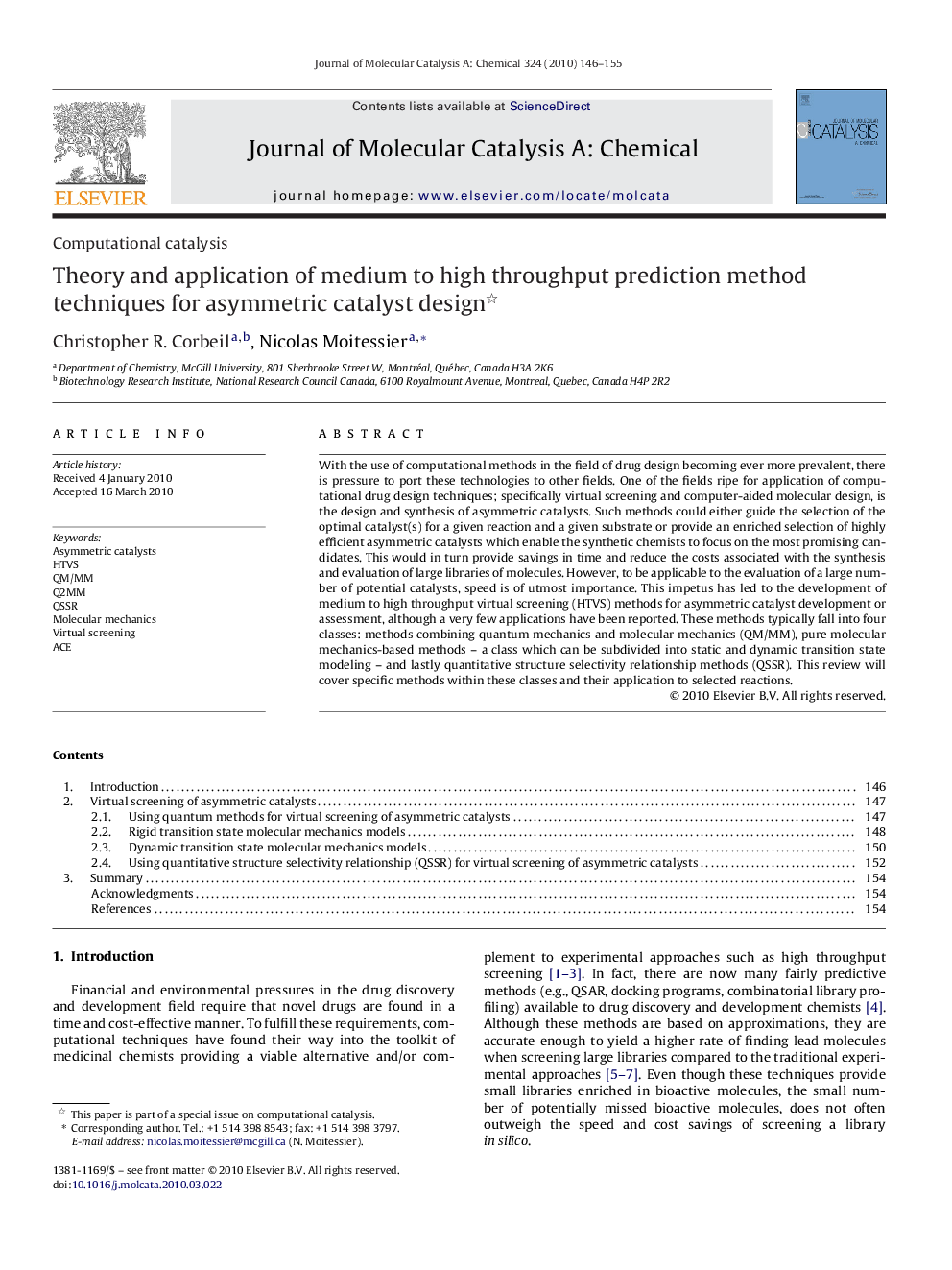| Article ID | Journal | Published Year | Pages | File Type |
|---|---|---|---|---|
| 66777 | Journal of Molecular Catalysis A: Chemical | 2010 | 10 Pages |
With the use of computational methods in the field of drug design becoming ever more prevalent, there is pressure to port these technologies to other fields. One of the fields ripe for application of computational drug design techniques; specifically virtual screening and computer-aided molecular design, is the design and synthesis of asymmetric catalysts. Such methods could either guide the selection of the optimal catalyst(s) for a given reaction and a given substrate or provide an enriched selection of highly efficient asymmetric catalysts which enable the synthetic chemists to focus on the most promising candidates. This would in turn provide savings in time and reduce the costs associated with the synthesis and evaluation of large libraries of molecules. However, to be applicable to the evaluation of a large number of potential catalysts, speed is of utmost importance. This impetus has led to the development of medium to high throughput virtual screening (HTVS) methods for asymmetric catalyst development or assessment, although a very few applications have been reported. These methods typically fall into four classes: methods combining quantum mechanics and molecular mechanics (QM/MM), pure molecular mechanics-based methods – a class which can be subdivided into static and dynamic transition state modeling – and lastly quantitative structure selectivity relationship methods (QSSR). This review will cover specific methods within these classes and their application to selected reactions.
Graphical abstractWith the use of computational methods in the field of drug design becoming ever more prevalent, there is pressure to port these technologies to other fields. One of the fields ripe for application of computational drug design techniques; specifically virtual screening and computer-aided molecular design, is the design and synthesis of asymmetric catalysts. Such methods could either guide the selection of the optimal catalyst(s) for a given reaction and a given substrate or provide an enriched selection of highly efficient asymmetric catalysts which enable the synthetic chemists to focus on the most promising candidates. This would in turn provide savings in time and reduce the costs associated with the synthesis and evaluation of large libraries of molecules. However, to be applicable to the evaluation of a large number of potential catalysts, speed is of utmost importance. This impetus has led to the development of medium to high throughput virtual screening (HTVS) methods for asymmetric catalyst development or assessment, although a very few applications have been reported. These methods typically fall into four classes: methods combining quantum mechanics and molecular mechanics (QM/MM), pure molecular mechanics-based methods – a class which can be subdivided into static and dynamic transition state modeling – and lastly quantitative structure selectivity relationship methods (QSSR). This review will cover specific methods within these classes and their application to selected reactions.Figure optionsDownload full-size imageDownload high-quality image (34 K)Download as PowerPoint slide
